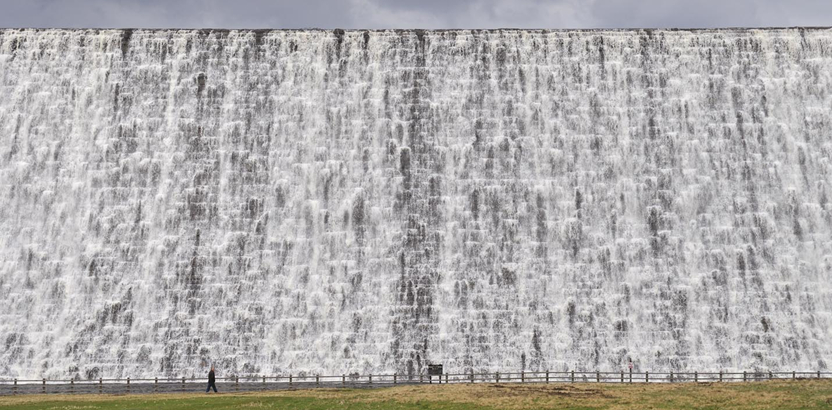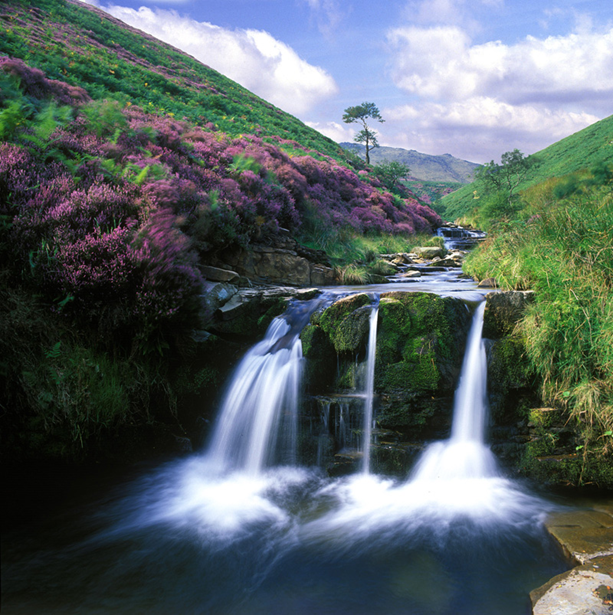Clean water
The Water Framework Directive (opens new window) is used by the Environment Agency to monitor the chemical and ecological status of the 400km of rivers and streams in the Peak District. In 2019, only one was classed as poor, 25 as moderate and 15 have good ecological status (opens new window).

Although watercourses (opens new window) in the Peak District are generally in a better ecological state than the national average (opens new window), none have reached high ecological status. The main reasons for Peak District rivers not achieving good ecological status stem from physical modifications (opens new window) and pollution from abandoned mines (opens new window), as well as pollution from waste water (opens new window) and rural areas (opens new window). However, many watercourses in the Peak District are too small to be assessed in this way.
The degraded condition of blanket bogs in the Dark Peak has caused bodies of water such as the Derwent Reservoir catchment to suffer from high levels of dissolved organic carbon (opens new window) during flooding events which can discolour the water and disrupt important natural processes (opens new window). Downstream, herbicides, pesticides and phosphates associated with agriculture are causing issues in places such as the Wye and Tittesworth Reservoir (opens new window) catchments. The upper Wye has been specifically identified as a Nutrient Neutrality Zone (opens new window) due to its vulnerability to potential increased nutrient run-off from new development.
Other sources of pollution include plastic waste, that has entered the waterways due to poor waste management and littering. Larger items of plastic can trap, cut or strangle aquatic life, however smaller micro-plastics (opens new window) are toxic to a host of organisms and can build up not just inside individuals but can accumulate across entire food chains and ecosystems (opens new window).
# For nature
- Limiting the amount of untreated sewage (opens new window) entering waterways will help to make the water cleaner, providing more light to aquatic plants and the organisms they feed off.
- Reducing nutrient run-off into our rivers and streams stops algae building up and causing eutrophication (where fertilised algae completely cover a body of water).
- Imbalance in the chemicals of rivers can affect some wildlife, therefore removing pollutants or preventing pollutants from entering the river can help improve the ecological condition.
- Limiting the amount of plastic and microplastics entering waterways will prevent their toxic effects harming wildlife, which has impacts all the way up the food chain.
# What else can clean water deliver?
- Reduced treatment costs for water companies, which can be passed to consumers.
- Flood prevention.
- Measures taken by farms to prevent run-off and leaching can also improve air quality, for example by less ammonia being released into the atmosphere.
- Maximising use of manure and other organic fertilisers instead of inorganic, as well as reducing wastage through run-off, can reduce input costs.
- Delivering clean water helps meet statutory obligations, for example Farming Rules for Water and Nitrate Vulnerable Zones.
- Cleaner water can improve visitor experiences as more recreational activities become possible.
- Clean water will improve the quality of drinking water for residents living in the catchment.
- Keeping rivers and waterways clean and pollutant free upstream will reduce the amount of pollution, including plastic and chemical pollutants flowing downstream and entering the sea.

# In practice
- Natural England delivers Nutrient Mitigation Schemes, and is also promoting the Catchment Sensitive Farming (opens new window) project. These schemes aims to reduce diffuse water pollution from agriculture by implementing better management techniques in the catchment areas of rivers, and has advice for farmers (opens new window).
- Issues may have to be tackled at the landscape scale to be effective in complex and interconnected waterways such as the labyrinthine network of caves and subterranean rivers (opens new window) in the White Peak.
- Minimise artificial fertiliser use and explore integrating more organic farming methods if not already employed.
- Trees and scrub can help absorb some of the excess nutrients around fields and can also limit the flow of water off them, meaning less nutrients will reach waterways in floods.
- Rough grassland can also be used as buffers between agricultural land and waterways.
- Moorland restoration can help improve the flood resilience, ecological status and water quality of rivers as well as improving carbon storage.
- Fencing with gates can help manage access to watercourses which are sensitive to threats to the water quality carried by livestock, people and pets.